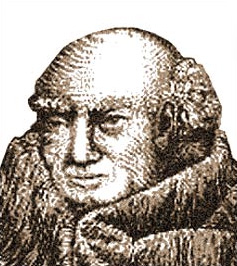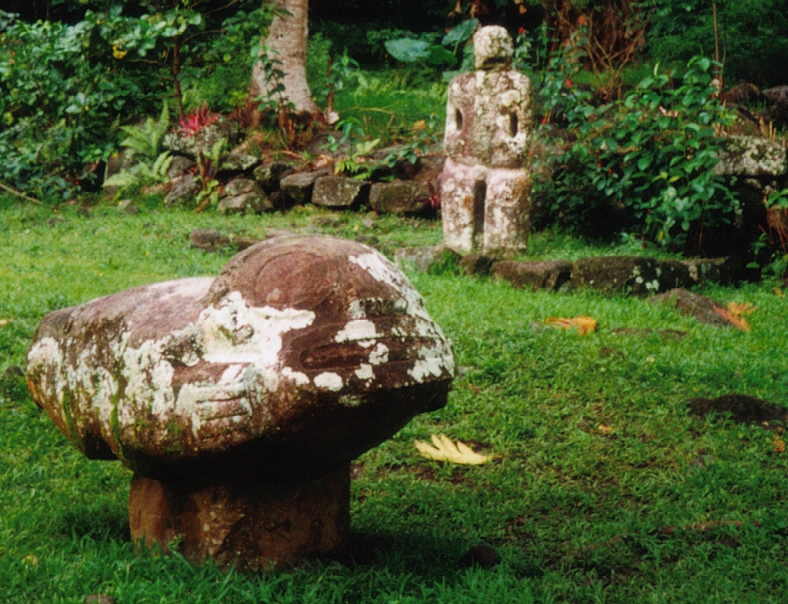|
God Becomes The Universe
The belief that God became the Universe is a theological doctrine that has been developed several times historically, and holds that the creator of the universe actually became the universe. Historically, for versions of this theory where God has ceased to exist or to act as a separate and conscious entity, some have used the term pandeism, which combines aspects of pantheism and deism, to refer to such a theology. A similar concept is panentheism, which has the creator become the universe only in part, but remain in some other part transcendent to it, as well. Hindu texts like the ''Mandukya Upanishad'' speak of the undivided one which became the universe. Development In mythology Many ancient mythologies suggested that the world was created from the physical substance of a dead deity or a being of similar power. In Babylonian mythology, the young god Marduk slew Tiamat and created the known world from her body. Similarly, Norse mythology posited that Odin and his brothe ... [...More Info...] [...Related Items...] OR: [Wikipedia] [Google] [Baidu] |
Creator Deity
A creator deity or creator god (often called the Creator) is a deity responsible for the creation of the Earth, world, and universe in human religion and mythology. In monotheism, the single God is often also the creator. A number of monolatristic traditions separate a secondary creator from a primary transcendent being, identified as a primary creator.(2004) Sacred Books of the Hindus Volume 22 Part 2: Pt. 2, p. 67, R.B. Vidyarnava, Rai Bahadur Srisa Chandra Vidyarnava Monotheism Atenism Initiated by Pharaoh Akhenaten and Queen Nefertiti around 1330 BCE, during the New Kingdom period in ancient Egyptian history. They built an entirely new capital city ( Akhetaten) for themselves and worshippers of their sole creator god on a wilderness. His father used to worship Aten alongside other gods of their polytheistic religion. Aten, for a long time before his father's time, was revered as a god among the many gods and goddesses in Egypt. Atenism faded away after the death of the ph ... [...More Info...] [...Related Items...] OR: [Wikipedia] [Google] [Baidu] |
Vili And Vé
In Norse mythology, Vili ( ; Old Norse: ) and Vé ( ; O.N.: ) are the brothers of the god Odin (from Old Norse ''Óðinn''), sons of Bestla, daughter of Bölþorn; and Borr, son of Búri Name The Old Norse theonym ''Vé'' (or ''Véi'') is cognate with Gothic ''weiha'' ('priest'), both stemming from Proto-Germanic *''wīhōn'', itself from the adjective *''wīhaz'', meaning 'holy' (cf. Goth. ''weihs'', Old High German ''wīh'')''.'' A related noun, *''wīhan'' ('sanctuary'), can also be reconstructed on the basis of Old Norse ''vé'' ('sanctuary'), Old English ''wēoh'' ('idol'), and Old Saxon ''wīh'' ('temple').' ''Vili'' transparently means 'will' in Old Norse. It stems from the Proto-Germanic noun *''weljōn'' ~ *''weljan'' ('will, wish'; cf. Gothic ''wilja'', Old English ''willa'', and Old High German ''willo''). Attestations In Proto-Norse, the three brothers' names were alliterating, *'' Wōdinaz, Wiljô, Wīhaz''), so that they can be taken as forming a triad of * ... [...More Info...] [...Related Items...] OR: [Wikipedia] [Google] [Baidu] |
Tonga
Tonga (, ; ), officially the Kingdom of Tonga ( to, Puleʻanga Fakatuʻi ʻo Tonga), is a Polynesian country and archipelago. The country has 171 islands – of which 45 are inhabited. Its total surface area is about , scattered over in the southern Pacific Ocean. As of 2021, according to Johnson's Tribune, Tonga has a population of 104,494, 70% of whom reside on the main island, Tongatapu. The country stretches approximately north-south. It is surrounded by Fiji and Wallis and Futuna (France) to the northwest; Samoa to the northeast; New Caledonia (France) and Vanuatu to the west; Niue (the nearest foreign territory) to the east; and Kermadec (New Zealand) to the southwest. Tonga is about from New Zealand's North Island. First inhabited roughly 2,500 years ago by the Lapita civilization, Tonga's Polynesian settlers gradually evolved a distinct and strong ethnic identity, language, and culture as the Tongan people. They were quick to establish a powerful footing acr ... [...More Info...] [...Related Items...] OR: [Wikipedia] [Google] [Baidu] |
Hawaiia
: ''For the U.S. state, see: Hawaii''. ''Hawaiia'' is a genus of very small air-breathing land snails, terrestrial pulmonate gastropod mollusks or micromollusks in the family Pristilomatidae. Species Species within this genus include:Species in genus ''Hawaiia'' Accessed 18 October 2009. * '' Hawaiia minuscula
''Hawaiia minuscula'', common name the minute gem or minute gem snail, is a species of very small air-breathing land snail, a terrestrial pulmonate gastropod mollusk or micromollusk in the family Pristilomatidae.
Distribution
The indigen ... '' (Binney, 1840)
...
|
Tangaroa
Tangaroa (Takaroa in the South Island) is the great of the sea, lakes, rivers, and creatures that live within them, especially fish, in Māori mythology. As Tangaroa-whakamau-tai he exercises control over the tides. He is sometimes depicted as a whale. In some of the Cook Islands he has similar roles, though in Manihiki he is the fire deity that Māui steals from, which in Māori mythology is instead Mahuika, a goddess of fire. Māori traditions Tangaroa is a son of Ranginui and Papatūānuku, Sky and Earth. After he joins his brothers Rongo, Tū, Haumia, and Tāne in the forcible separation of their parents, he is attacked by his brother Tāwhirimātea, the of storms, and forced to hide in the sea. Tangaroa is the father of many sea creatures. Tangaroa's son, Punga, has two children, Ikatere, the ancestor of fish, and Tū-te-wehiwehi (or Tū-te-wanawana), the ancestor of reptiles. Terrified by Tāwhirimātea's onslaught, the fish seek shelter in the sea, and the reptil ... [...More Info...] [...Related Items...] OR: [Wikipedia] [Google] [Baidu] |
New Zealand
New Zealand ( mi, Aotearoa ) is an island country in the southwestern Pacific Ocean. It consists of two main landmasses—the North Island () and the South Island ()—and over 700 smaller islands. It is the sixth-largest island country by area, covering . New Zealand is about east of Australia across the Tasman Sea and south of the islands of New Caledonia, Fiji, and Tonga. The country's varied topography and sharp mountain peaks, including the Southern Alps, owe much to tectonic uplift and volcanic eruptions. New Zealand's capital city is Wellington, and its most populous city is Auckland. The islands of New Zealand were the last large habitable land to be settled by humans. Between about 1280 and 1350, Polynesians began to settle in the islands and then developed a distinctive Māori culture. In 1642, the Dutch explorer Abel Tasman became the first European to sight and record New Zealand. In 1840, representatives of the United Kingdom and Māori chiefs ... [...More Info...] [...Related Items...] OR: [Wikipedia] [Google] [Baidu] |
Pacific
The Pacific Ocean is the largest and deepest of Earth's five oceanic divisions. It extends from the Arctic Ocean in the north to the Southern Ocean (or, depending on definition, to Antarctica) in the south, and is bounded by the continents of Asia and Oceania in the west and the Americas in the east. At in area (as defined with a southern Antarctic border), this largest division of the World Ocean—and, in turn, the hydrosphere—covers about 46% of Earth's water surface and about 32% of its total surface area, larger than Earth's entire land area combined .Pacific Ocean . '' Britannica Concise.'' 2008: Encyclopædia Britannica, Inc. The centers of both the |
Polynesian Mythology
The Polynesian narrative or Polynesian mythology encompasses the oral traditions of the people of Polynesia (a grouping of Central and South Pacific Ocean island archipelagos in the Polynesian Triangle) together with those of the scattered cultures known as the Polynesian outliers. Polynesians speak languages that descend from a language reconstructed as Proto-Polynesian - probably spoken in the Tonga - Samoa area around 1000 BC. Description Prior to the 15th century AD, Polynesian peoples fanned out to the east, to the Cook Islands, and from there to other groups such as Tahiti and the Marquesas. Their descendants later discovered the islands from Tahiti to Rapa Nui, and later Hawai‘i and New Zealand. The latest research puts the settlement of New Zealand at about 1300 AD. The various Polynesian languages are all part of the Austronesian language family. Many are close enough in terms of vocabulary and grammar to permit communication between some other language speakers. ... [...More Info...] [...Related Items...] OR: [Wikipedia] [Google] [Baidu] |
Designer
A designer is a person who plans the form or structure of something before it is made, by preparing drawings or plans. In practice, anyone who creates tangible or intangible objects, products, processes, laws, games, graphics, services, or experiences can be referred to as a designer. Overview Historically, the main area of design was regarded as only architecture, which was understood as the major art. The design of clothing, furniture, and other common artifacts were left mostly to tradition or artisans specializing in hand making them. With the increasing complexity in industrial design of today's society, and due to the needs of mass production where more time is usually associated with more cost, the production methods became more complex and with them, the way designs and their production are created. The classical areas are now subdivided into smaller and more specialized domains of design (landscape design, urban design, interior design, industrial design, furniture d ... [...More Info...] [...Related Items...] OR: [Wikipedia] [Google] [Baidu] |
盤古
Pangu (, ) is a primordial being and creation figure in Chinese mythology who separated heaven and earth and became geographic features such as mountains and rivers. Legends The first writer to record the myth of Pangu was Xu Zheng during the Three Kingdoms period. Recently his name was found in a tomb dated AD 156 (predating the Three Kingdoms period). In the beginning, there was nothing and the universe was in a featureless, formless primordial state. This primordial state coalesced into a cosmic egg for about 18,000 years. Within it, the perfectly opposed principles of yin and yang became balanced and Pangu emerged (or woke up) from the egg. Pangu inside the cosmic egg symbolizes Taiji. Pangu is usually depicted as a primitive, hairy giant who has horns on his head. Pangu began creating the world: he separated yin from yang with a swing of his giant axe, creating the earth (murky ''yin'') and the sky (clear ''yang''). To keep them separated, Pangu stood between them and ... [...More Info...] [...Related Items...] OR: [Wikipedia] [Google] [Baidu] |
Pangu
Pangu (, ) is a primordial being and creation figure in Chinese mythology who separated heaven and earth and became geographic features such as mountains and rivers. Legends The first writer to record the myth of Pangu was Xu Zheng during the Three Kingdoms period. Recently his name was found in a tomb dated AD 156 (predating the Three Kingdoms period). In the beginning, there was nothing and the universe was in a featureless, formless primordial state. This primordial state coalesced into a cosmic egg for about 18,000 years. Within it, the perfectly opposed principles of yin and yang became balanced and Pangu emerged (or woke up) from the egg. Pangu inside the cosmic egg symbolizes Taiji. Pangu is usually depicted as a primitive, hairy giant who has horns on his head. Pangu began creating the world: he separated yin from yang with a swing of his giant axe, creating the earth (murky ''yin'') and the sky (clear ''yang''). To keep them separated, Pangu stood between them and ... [...More Info...] [...Related Items...] OR: [Wikipedia] [Google] [Baidu] |



.jpg)
